What's faster for gravel? Volume versus grip
This content was produced in association with Maxxis
We’ve been out testing gravel tyres to help figure out which is best for your gravel riding pursuits.
Tyre choice is often the hot topic when it comes to gravel riding, with a range of different philosophies vying for attention. Be it high-volume, 650b slicks or more traditional, narrow but knobbly, or CX-like tyres; there’s a range of options out there.
So we decided to put the spectrum of gravel tyre types on test to see which is fastest: volume or grip?
The tyres
Maxxis provided us with three different sets of tyres for our test.
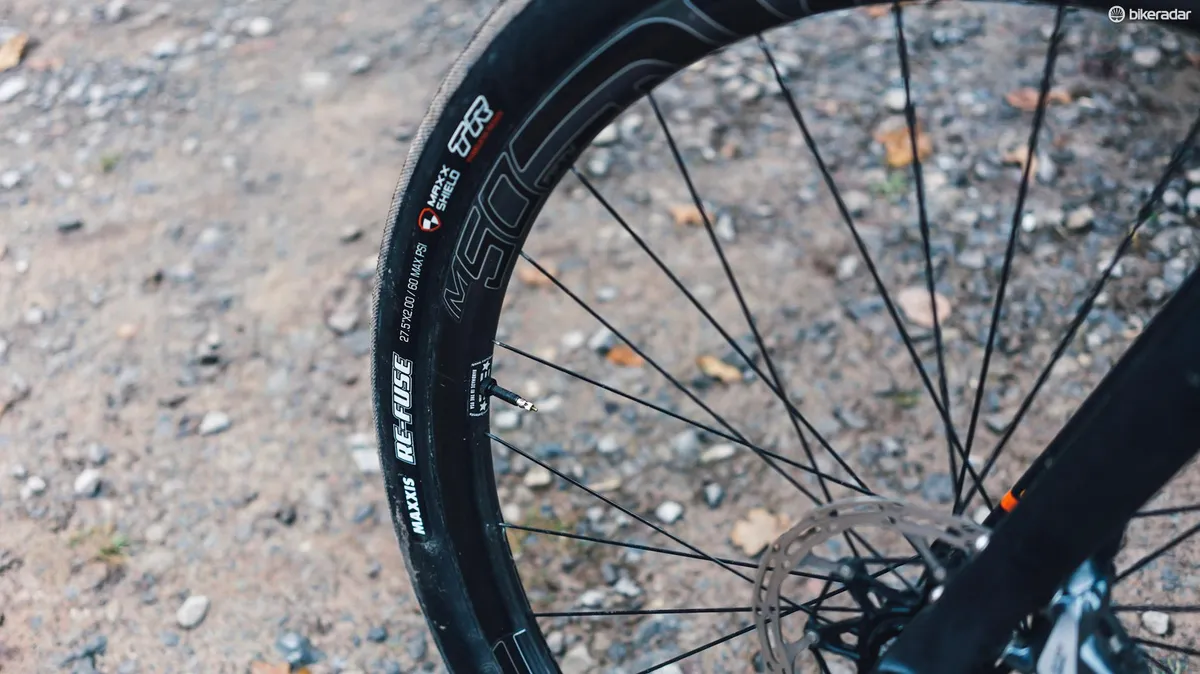
The high volume, 2-inch wide, 650b Maxxis Re-Fuse, subscribes to the high-volume, low pressure, school of thought and matches that with a fast-rolling diamond file tread.
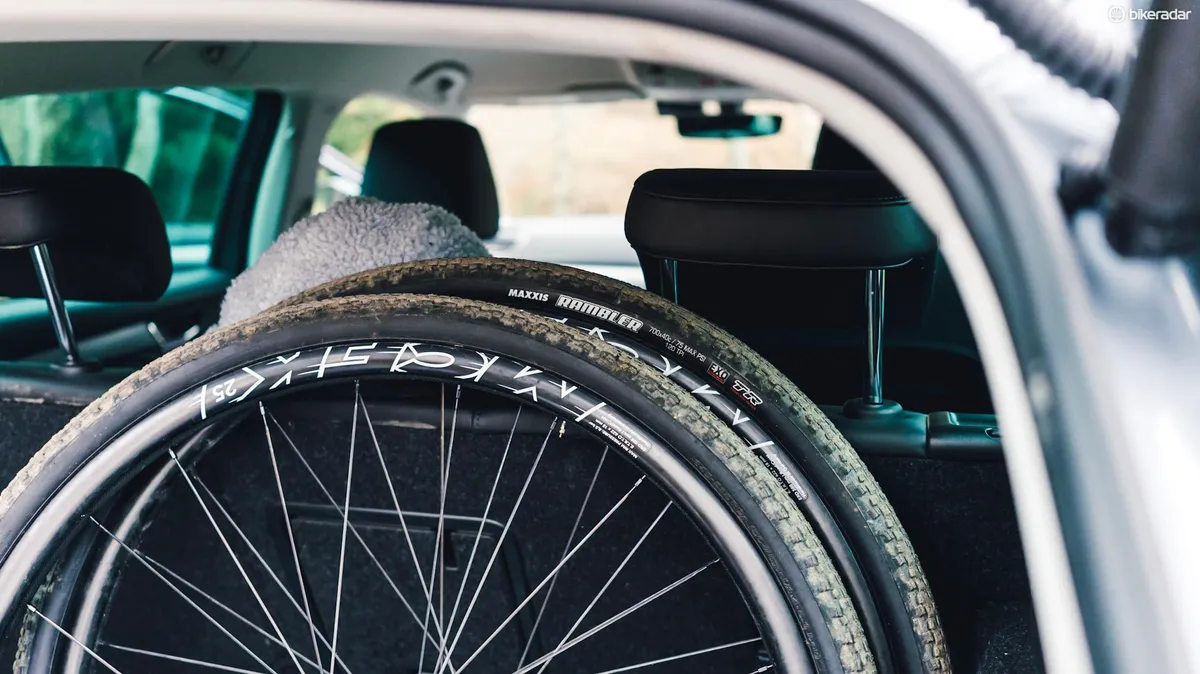
The 40mm, 700c Maxxis Rambler is an all-round option, and strikes a balance between decent volume and a lightly-treaded design.
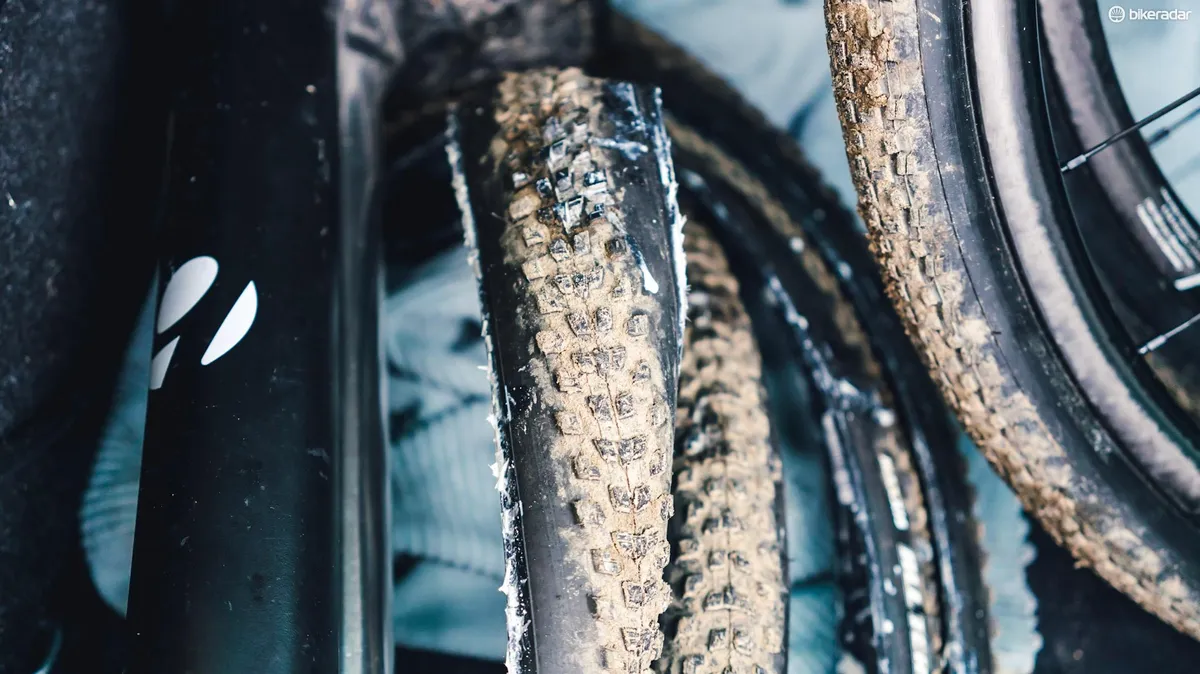
The 33mm, 700c Maxxis All Terrane is a much more traditional cyclocross-like option, with a narrow width that is compensated by a pronounced and aggressive tread.
The setup
All tyres were set up tubeless with 60ml of sealant for the 700c tyres and 90ml for the 650b tyre, as per manufacturer’s recommendations.
To keep things as consistent as possible, the two 700c tyres were tested on the same MCFK 25 wheels, while the 650b tyres were tested on an Enve M50 wheelset.
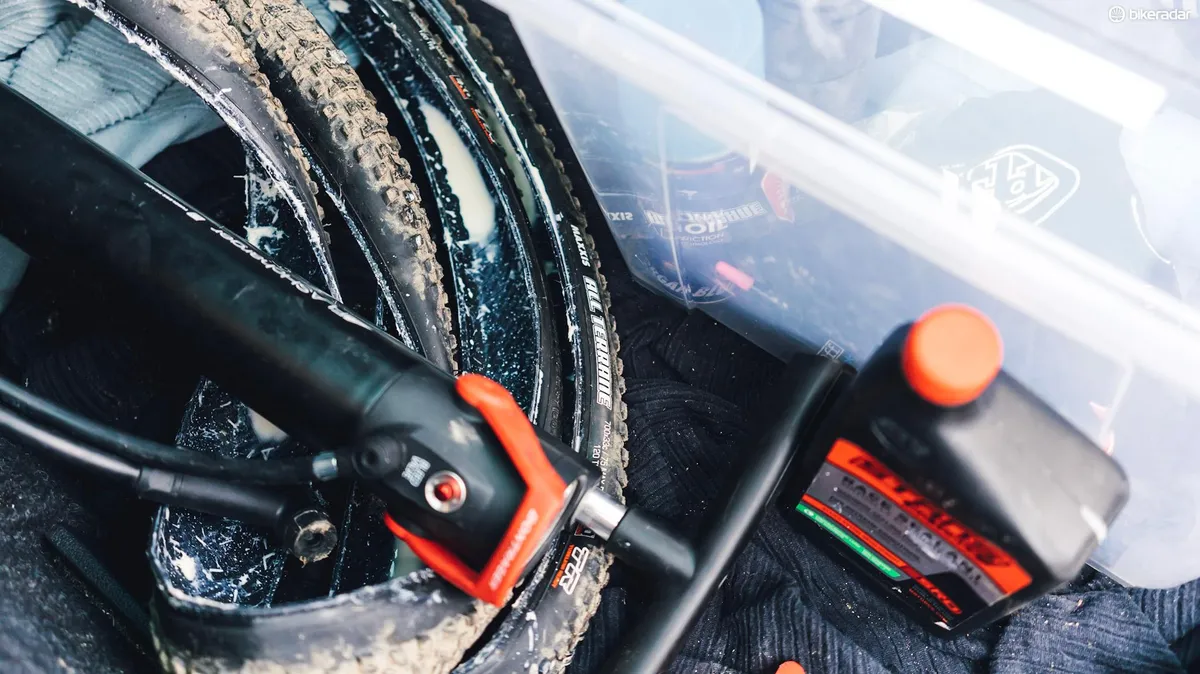
Tyre pressure
To achieve similar handling of different tyres it’s important to consider the tyre casing tension, rather than the pressure that’s inside the tyre.
Maintaining a consistent casing tension across the tyres on test means that how the tyre handles rider weight and being ridden will remain consistent across different sizes.
The tension of the casing is described according to Laplace’s pressure law for cylinders (the tyre can be approximated as a long cylinder), with the tension described as follows:
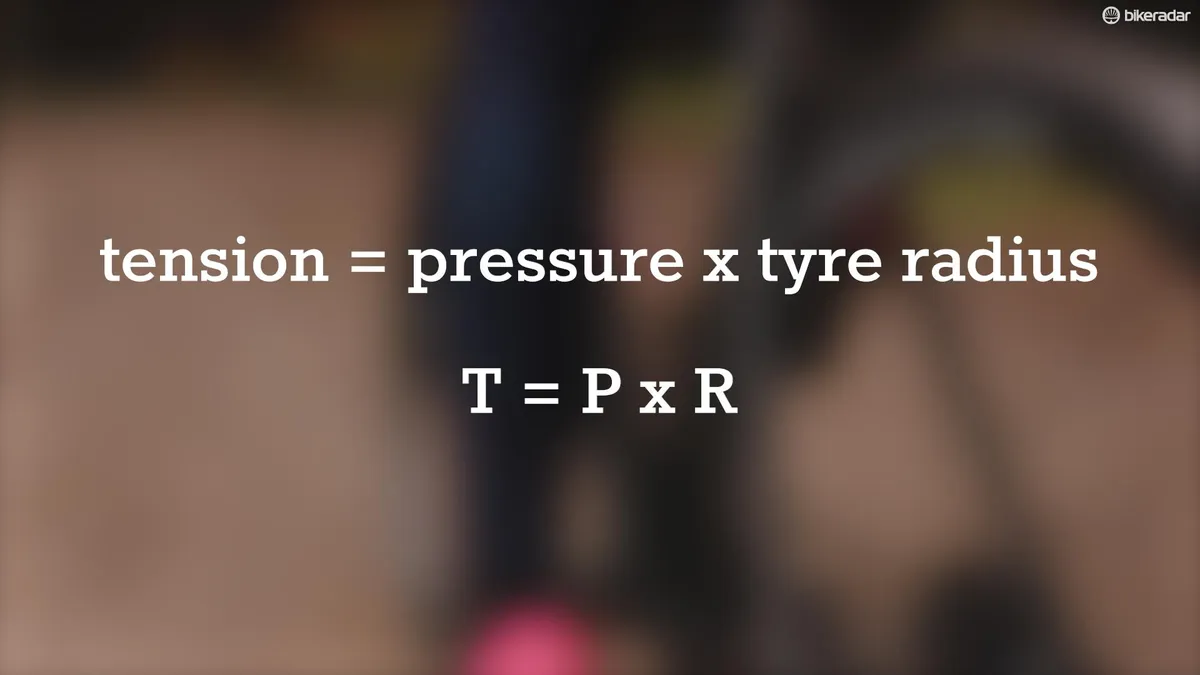
An initial test ride determined a suitable pressure for the 33mm tyre of 40psi. With the pressure and dimensions fixed, a reference tension can be established according to the equation above.
Using this tension, along with the tyre dimensions, it is possible to find the optimum pressure for each tyre.
That results in 33psi for the 40mm Rambler, and 27psi for the 2-inch/50.8mm ReFuse.
The testing
Each of the tyres were compared several times on a roll-down test, a climbing test and on an approximately 15-minute loop on the Forest of Dean's gravel roads.
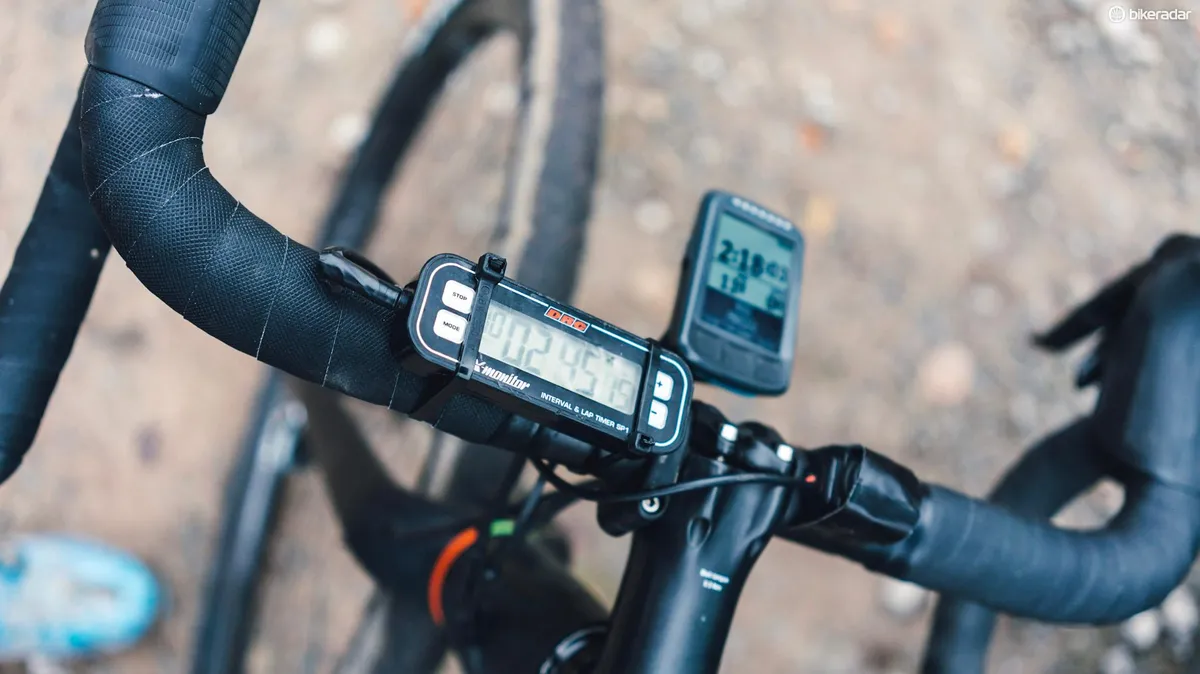
A power meter was used throughout to ensure consistent testing and to avoid any unconscious bias for/against a particular tyre.
Timing was handled by a moto-style stopwatch, actuated from the bars when passing the markers on the pre-determined tracks.
Roll-down testing
Each tyre was tested five times rolling down a fixed track with each run timed. An average was taken for each tyre with the following results:
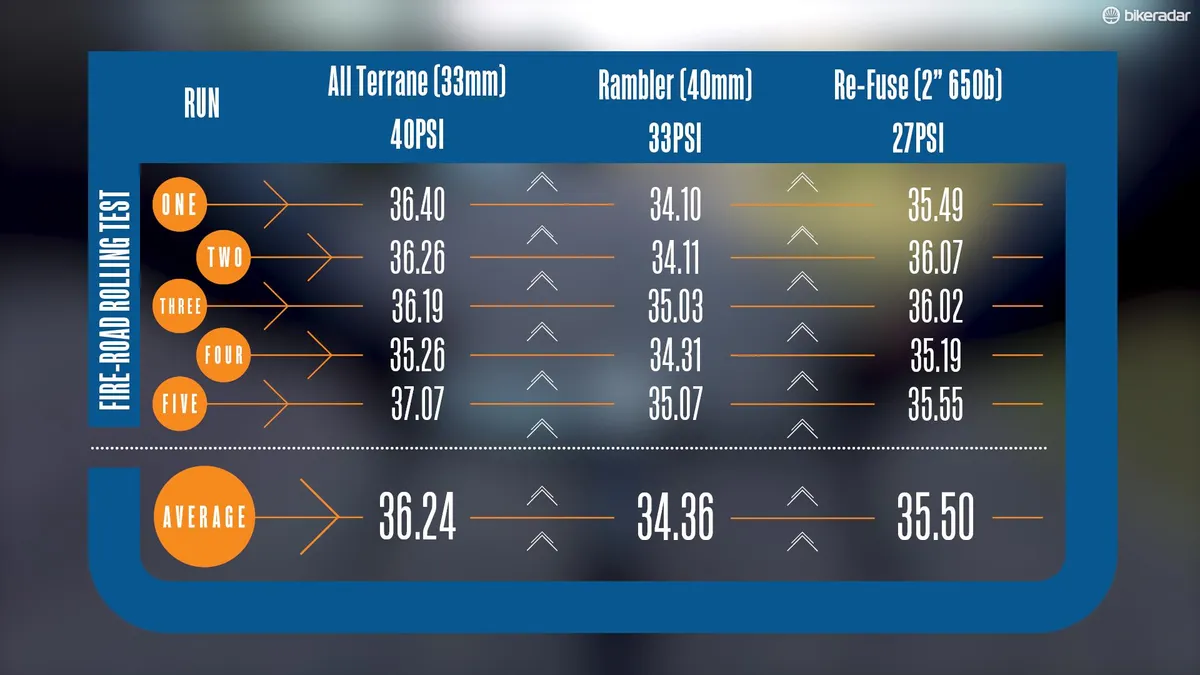
The 40mm Ramblers were consistently the fastest, followed closely by the high volume 650b Re-Fuse and trailed by the narrower All Terrane
Climbing test
The climbing test involved a roughly 3-minute climb that started out smooth and kicked up to rougher terrain at the end, using as close as possible to an average power of 300 Watts.
Each tyre was tested three times and the average taken, with the following results:
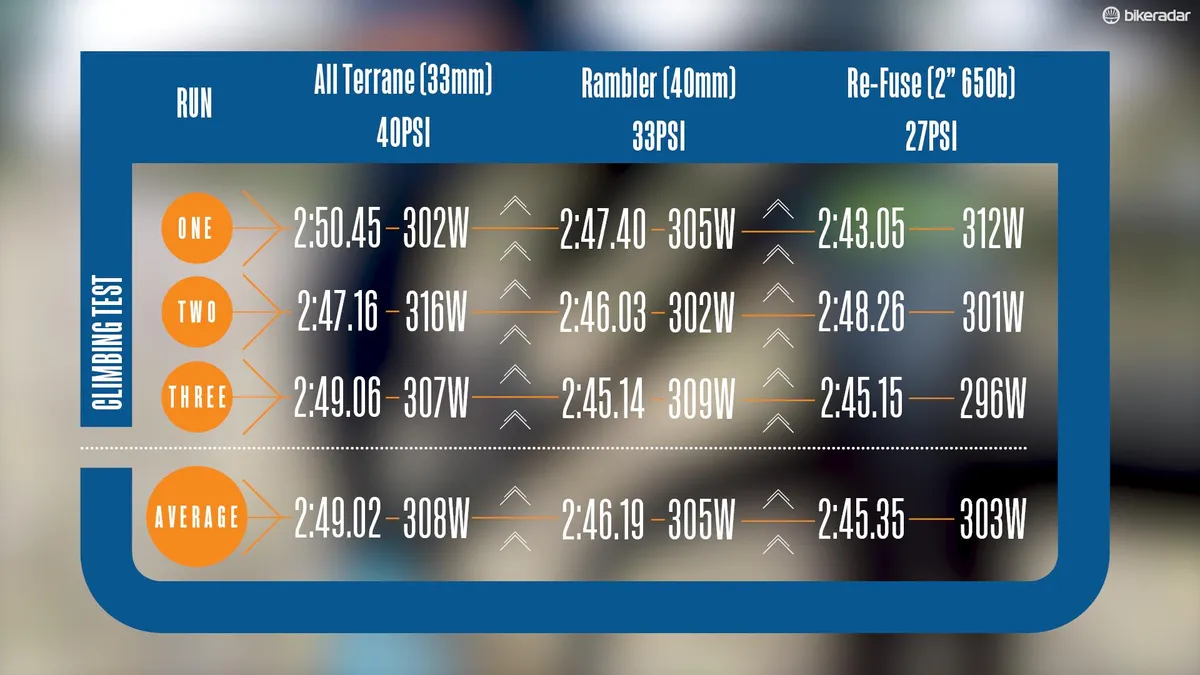
The high-volume 650b Re-Fuse edged in ahead of the 40mm Rambler, though the difference is likely within the margin for error of testing.
The 33mm All Terrane trailed behind despite a higher average power for the test runs.
Real-world loop
Finally, we rode each of the tyres once on a 15-minute loop and at a target normalised-power of 275 Watts.
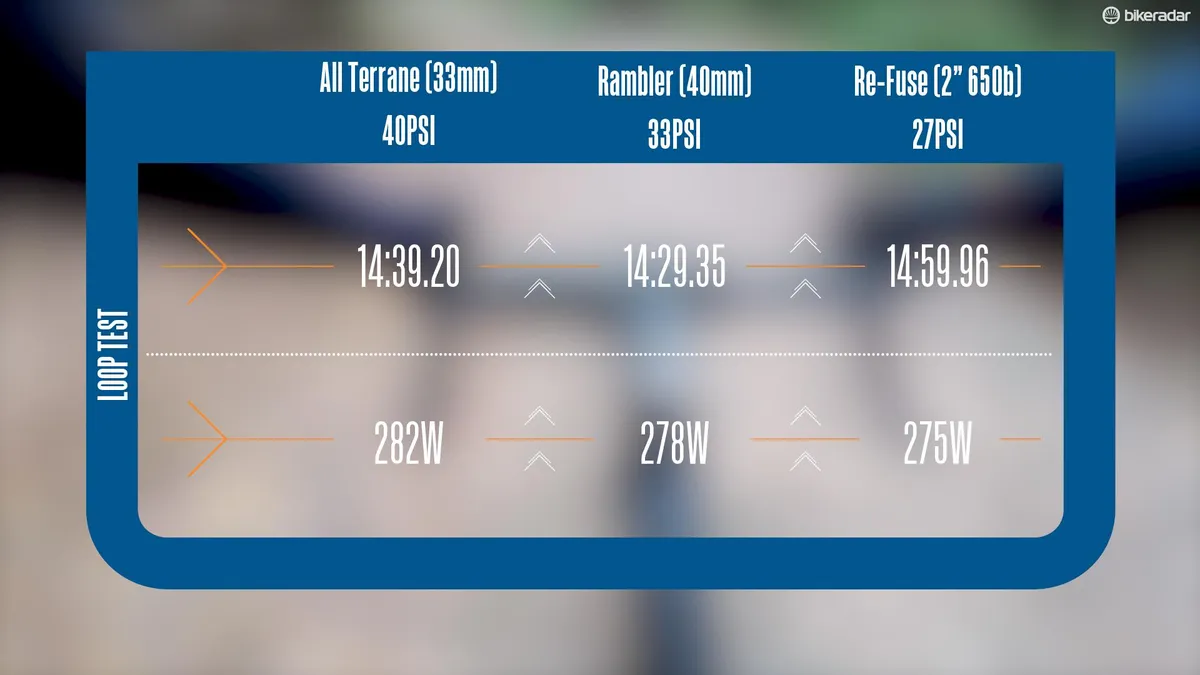
Surprisingly, the high-volume Re-Fuse performed the worst out of all the tyres, with the 40mm all-round Ramblers returning the best results.
The results
We were surprised by some of the test results, which ran slightly counter to a number of our intuitions and expectations.
The roll-down test results weren't particularly unexpected, with the higher volume tyres rolling faster than the narrower (harder) tyre, which would be bounced around more on rough terrain.
Both the lightly treaded and more aggressively treaded Rambler and All Terrane offered more security
We expected the high-volume, 650b Re-Fuse to be slower on the climbing section, assuming it would have poor grip due to the lack of tread. However we didn’t experience any loss of traction, likely due to the large contact area of the tyre.
We’d even posit that the reduced moment of inertia of the smaller 650b wheel size may have given it the slight edge on the climbs.
However, the most surprising result was the real-world loop testing, where the Re-Fuse fell far behind the other tyres.
This is where handling and performance become a lot more subjective. While the Re-Fuse did well in the effectively ‘straight-line’ testing, on the loop, where cornering grip played a key role, we found it difficult to hold as much speed through corners and put down power early coming through the corners.
This led to slower overall performance, despite the Re-Fuse having done very well in the more prescriptive experiments.
For the conditions on the day, it became clear that both the lightly treaded and more aggressively treaded Rambler and All Terrane offered more security, allowing the loop to be ridden faster and more efficiently.
Conclusion
There’s no doubt that a high-volume tyre will provide significant amounts of comfort, but in our testing we found the slick gravel option didn’t offer enough cornering grip to ride as quickly as the others on our test loop.
However, we should state that the conditions were slightly greasy and, as soon as it starts to get slippery, a more pronounced tread will win out over high volume. In other words, for our experiment, tread was faster than volume.
However, as usual there’s no hard and fast answers, and what works best will depend on the conditions you ride. Take our results as a guideline to inform your choices to finding the most suitable gravel tyre for your needs.